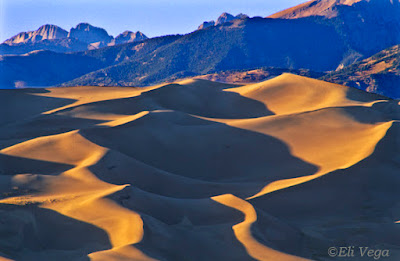HOT AIR BALLOONS
Who doesn't like hot air balloons, right? They're fun, intriguing, imaginative, and colorful--perfect ingredients for photography.
I like the shows, but I also look for those weekenders that are out for a joy ride in the sky. That can be fun too.
FOCAL LENGTH. I highly suggest a wide range of focal lengths, anywhere between 17mm (or wider) to 300mm. Those balloons are huge. I like to photograph them when they're still on the ground, but for those shots I need wide-angle focal lengths. I also like to zoom into them when they're in the air, and for those I need 200mm-300mm. The additional advantage of those focal lengths is that they give me the "illusion of compression"--they make the balloons appear as if they're much closer to each other than they really are.
ISO. I like to keep my ISO around 100. However, if I need a faster shutter speed, I'll "pump up" my ISO to 200-400 or higher if necessary. Even with today's ISO improvements, I still prefer to keep my ISO to 800 or less.
Depth-of-field. Make sure you have enough f/stops to cover what you want to cover. I use my depth-of-field preview button to give me a quick preview of how much depth-of-field coverage I'm getting. With wide-angle lenses, we need less f/stops to get good depth-of-field. With telephoto lenses, we need more f/stops to get the depth-of-field we need. So be careful and choose wisely.
Shutter speeds. Hot Air Balloons move slowly. That said, they are moving. As general rule-of-thumb, if you're shooting hand-held, make sure your shutter speed is equal to or greater than the focal length your using. For example, if shooting with a focal length of 300, make sure your shutter speed is at least around 300. That rule-of-thumbs ensures that your hand movement will not show in the final print as a blurred photo.
White balance. I keep mine on Daylight/Sunshine all the time.
Picture control. I shoot mostly Aperture Priority. I set my picture control to "Vivid." Keep in mind that different cameras have a different designation for "Vivid," for example, "Landscape," and other designations.
Composition. Vary your compositions to create more interest. Otherwise, all your balloon images will look the same. Get vertical and horizontal shots. Include one balloon and several balloons, on the ground and in the air, tight shots and wide-angle shots.
Exposure. This is the biggest challenge with hot air balloons. Their brightness and colorfulness will trick your built-in exposure light meter into creating under-exposed images. This is especially true when shooting up and into the bright sky! Now you have bright balloons against a bright sky! Learn how to take advantage of your exposure compensation dial in your camera to make exposure adjustments on the spot!
With that long introduction, I will share a few images of hot air balloons in all settings.
The balloons had already taken off. I didn't give them time to spread out against the early-morning sky. I zoomed in and got this dramatic tight shot.
Several folks were staring toward the early morning sun as one balloon took off. At the same time, I loved the backdrop of the giant balloon still on the ground behind them.
Heating it up, getting it ready for flight.
I really zoomed in on this one to simply capture its intricate design. They can get pretty creative.
Now, this one was tricky to capture. I had to look straight up, yet making sure I got it sharp enough, with the right exposure. It was fun doing this one, though. As you can see, it's the same one as above.
This was fun watching. I had never seen this before. There were two balloons still on the ground. Then there was that other balloon that was struggling to lift off. At one point during its struggles, it gently tapped one of the balloons on the ground before it finally floated toward the sky.
I chose just two balloons for this composition, with one just showing its colors rather than the balloon itself.
This scenario just begged for a photograph. It told a story: people mingling, enjoying and admiring the balloons, one giant balloon still on the ground while the other two had just taken off--lots of eye flow.
Research your county or state for any hot air balloon festivals. You can also search for hot air balloon clubs. Have fun with it. Hot air balloons and festivals offer us unique photo opportunities.

























































